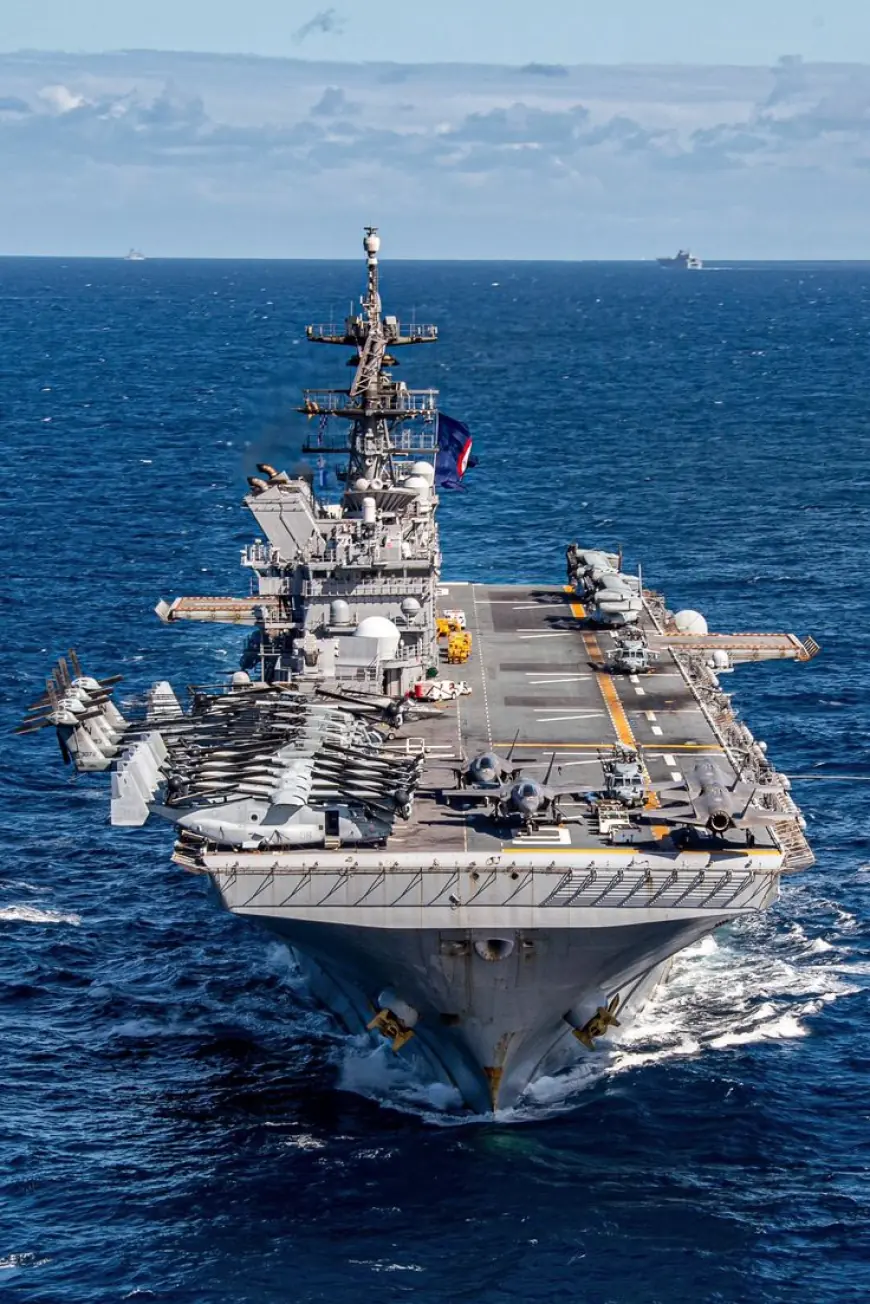10 Essential Navy Current Affairs for 2025
As global maritime dynamics shift, staying updated with the latest developments in naval strategy, technology, and geopolitics is crucial.

The oceans are more than just trade routes—they are power corridors shaping global diplomacy and defense. As we move deeper into 2025, the naval forces of leading nations are undergoing transformative changes to respond to emerging threats, cutting-edge technologies, and new alliances. In this article, we explore 10 Essential Navy Current Affairs for 2025, capturing the key events and trends shaping today’s maritime landscape.
1. AUKUS Submarine Pact Sets Strategic Milestone
The AUKUS alliance—comprising Australia, the UK, and the USA—continues to dominate naval discourse with its nuclear-powered submarine development program. In 2025, Australia commenced infrastructure upgrades in Perth and Adelaide, aiming for operational deployment by the early 2030s. The pact not only strengthens Indo-Pacific deterrence but also signifies a deep technological collaboration among western allies.
2. India’s INS Vishal Project Gains Momentum
India’s push for a blue-water navy took a significant leap forward as the INS Vishal, its second indigenous aircraft carrier, entered advanced design phases in 2025. With nuclear propulsion under consideration, this vessel is poised to expand India's maritime influence in the Indian Ocean Region (IOR), reflecting New Delhi’s ambition to counterbalance Chinese dominance in the area.
3. China’s Naval Expansion Accelerates
China launched its fourth aircraft carrier in early 2025, reportedly featuring electromagnetic catapult launch systems (EMALS). With a fleet nearing 400 ships, the People’s Liberation Army Navy (PLAN) is the world’s largest, and its assertive posturing in the South China Sea remains a flashpoint. This rapid naval expansion underscores China’s goal of becoming a true global maritime power.
4. The Arctic Becomes a Naval Frontier
Climate change continues to reshape naval priorities. Melting ice has opened new sea lanes, turning the Arctic into a theater of competition. In 2025, both Russia and NATO countries intensified patrols and infrastructure investments in the High North. Arctic warfare exercises are now a regular feature, highlighting the region’s growing strategic value.
5. AI and Autonomous Systems Revolutionize Naval Warfare
Navies worldwide are integrating Artificial Intelligence (AI) and unmanned systems into combat and surveillance operations. The U.S. Navy’s Ghost Fleet Overlord project hit a milestone with fully autonomous patrol missions in the Pacific. Similarly, the UK’s Royal Navy has expanded its drone fleet to enhance reconnaissance capabilities—marking a shift toward leaner, smarter fleets.
6. Cybersecurity and Electronic Warfare Take Center Stage
As naval systems become more digitized, cyber vulnerabilities have escalated. In 2025, a high-profile cyberattack disrupted the satellite navigation systems of an allied fleet during joint exercises in the Indo-Pacific. This event sparked renewed focus on naval cybersecurity protocols and electronic warfare readiness across all major navies.
7. Maritime Piracy and Terrorism Surge in Critical Zones
Despite advancements, maritime piracy has resurged in the Gulf of Guinea and Horn of Africa. Naval forces in 2025 are collaborating more intensely through multilateral task forces to ensure freedom of navigation. Additionally, the threat of seaborne terrorism has prompted nations to bolster coastal radar networks and port security frameworks.
8. Green Navy Initiatives Gain Traction
Environmental sustainability has entered naval doctrine. The year 2025 saw the launch of hybrid-powered ships by Scandinavian countries, and the U.S. Navy began trials of biofuel-powered support vessels. These initiatives aim to reduce the carbon footprint of defense operations while maintaining combat efficiency.
9. Women in the Navy Break New Ground
2025 has been a landmark year for gender inclusion in naval forces. For the first time, multiple navies appointed women to frontline submarine commands and carrier operations. These breakthroughs signal a cultural shift toward inclusivity and diversity, recognizing the critical role of women in national defense.
10. International Naval Exercises Strengthen Strategic Ties
Large-scale multinational exercises—like RIMPAC 2025, Malabar, and Operation Sea Guardian—demonstrated enhanced interoperability and commitment to collective maritime security. These events are not merely drills; they are strategic tools to reinforce alliances, especially in response to aggressive posturing by revisionist states.
Conclusion: Steering Toward a New Maritime Epoch
The 10 Essential Navy Current Affairs for 2025 reflect a world where maritime supremacy is no longer just about numbers—it’s about adaptability, technological edge, and strategic foresight. From Arctic patrols to AI-powered warships, the oceans are once again becoming central to global power projection.
For analysts, defense enthusiasts, and policymakers, tracking these developments isn’t optional—it’s essential. As Theveza continues to monitor these trends, we invite our readers to stay informed, engaged, and ready to navigate the future of naval affairs.
What's Your Reaction?
 Like
0
Like
0
 Dislike
0
Dislike
0
 Love
0
Love
0
 Funny
0
Funny
0
 Angry
0
Angry
0
 Sad
0
Sad
0
 Wow
0
Wow
0


















































